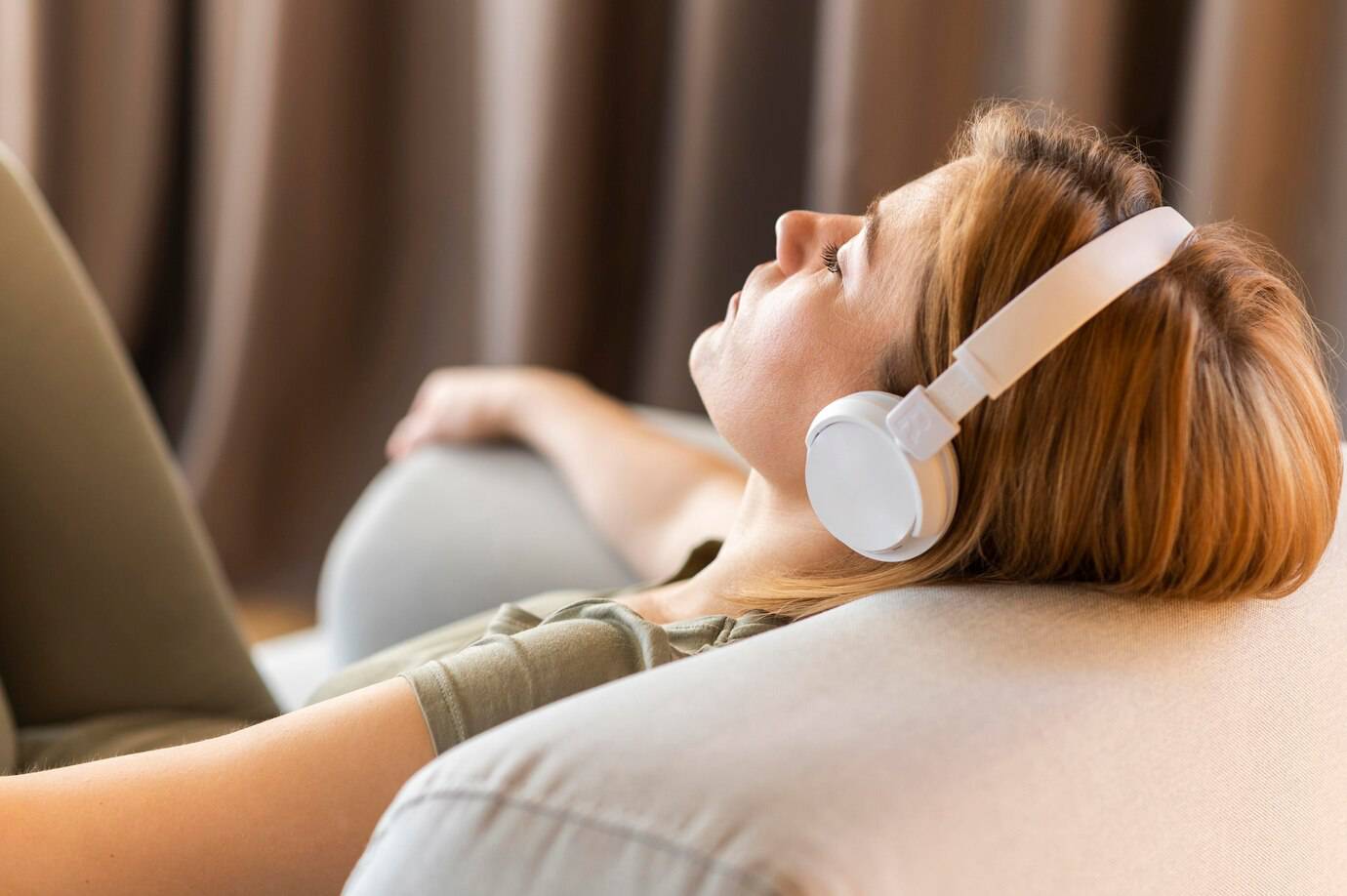
Binaural Beats: Enhancing Meditation and Sleep
Imagine slipping into a state of deep meditation or drifting off to sleep effortlessly, guided only by sound. No pills, no incense, no complicated techniques—just pure frequency doing its job. Welcome to the calming realm of binaural beats, an increasingly popular form of brainwave entrainment and a potent meditation aid.
If you find it hard to calm your mind during mindfulness or have restless nights, binaural beats could help your brain relax. In this blog, we’ll break down the science. We’ll also look at practical uses and share tips. This will help you use this interesting technique for better well-being.
What Are Binaural Beats?
The Basics
Binaural beats are an auditory illusion. When you listen to two different frequencies in each ear, your brain hears a third tone. This phantom beat shows the mathematical difference between the two frequencies.
For example:
- Left ear: 300 Hz
- Right ear: 310 Hz
- Perceived beat: 10 Hz (a theta wave)
This illusion causes the brain to align its dominant frequency with the perceived beat, effectively entraining the mind into specific mental states.
Historical Context
Heinrich Wilhelm Dove, a physicist, discovered the phenomenon in 1839. However, researchers only started looking into its uses in neurotherapy, meditation, and sleep science in the late 20th century.
The Science Behind Brainwave Entrainment
Brainwave Frequencies
Your brain operates at different frequencies depending on your mental state:
- Delta (0.5–4 Hz): Deep sleep
- Theta (4–8 Hz): Light sleep, deep meditation
- Alpha (8–13 Hz): Relaxation
- Beta (13–30 Hz): Focus and alertness
- Gamma (30+ Hz): Cognitive functioning
Binaural beats help transition your brain into one of these states based on the frequency you choose to listen to.
Entrainment in Action
Studies have shown that listening to binaural beats can influence cognition, mood, and sleep. For example:
- A 2015 study in Frontiers in Human Neuroscience found that theta and delta beats improved sleep quality.
- A 2019 meta-analysis published in Psychiatry Research indicated that anxiety symptoms significantly reduced after binaural beat exposure.
Benefits of Binaural Beats

1. Enhanced Meditation
Meditation can be tough, especially for beginners. Binaural beats help by:
- Quieting internal chatter
- Inducing a trance-like state
- Promoting theta brainwave dominance
2. Better Sleep
Struggling with insomnia? Binaural beats in the delta or theta range can:
- Shorten sleep onset time
- Improve deep sleep cycles
- Reduce night-time awakenings
Pair it with other natural remedies from African Herbal Medicine: A Holistic Approach to Health .
3. Focus and Productivity
Higher-frequency beats like beta or low-gamma can:
- Enhance alertness
- Improve problem-solving skills
- Increase motivation for tasks
4. Stress and Anxiety Relief
Binaural beats help activate the parasympathetic nervous system, making them useful for:
- Lowering cortisol levels
- Calming racing thoughts
- Encouraging emotional resilience
How to Use Binaural Beats
Tools You Need
- Headphones: Essential for delivering two separate frequencies
- Mobile Apps or Streaming Services: Try Brain.fm, Insight Timer, or YouTube
- Comfortable Environment: Quiet, dim lighting, no distractions
Steps to Use Binaural Beats
- Choose your goal (e.g., relaxation, focus, sleep)
- Select the corresponding beat frequency
- Set a timer (15–45 minutes is ideal)
- Sit or lie down comfortably
- Focus on your breath or a mantra
Frequency Suggestions
| Goal | Frequency (Hz) | Brainwave State |
| Deep Sleep | 1–4 | Delta |
| Meditation | 4–8 | Theta |
| Relaxation | 8–13 | Alpha |
| Concentration | 14–30 | Beta |
| Peak Performance | 30+ | Gamma |
Tips for Maximum Effectiveness

- Stay consistent: Daily listening yields better results
- Avoid multitasking: Let your mind fully immerse
- Hydrate after sessions: Supports detox and energy flow
- Journal your experience: Track changes and insights
Real-Life Story: From Chaos to Calm
Rachel, a busy university student, battled with anxiety and sleeplessness during exam season. A friend recommended binaural beats. Sceptical at first, Rachel tried a theta track before bed. Within days, she noticed improved sleep. After a month, she felt calmer, more focused, and more in control.
Her verdict? “It felt like someone turned the volume down on my mental noise.”
Common Myths Debunked
Myth 1: Binaural Beats Work Instantly
While some experience quick results, most need regular use to feel consistent benefits.
Myth 2: You Can Listen Without Headphones
Nope. Stereo separation is key to creating the auditory illusion.
Myth 3: They Replace Medical Treatment
They can support mental wellness, but should not replace professional medical advice.
Precautions and Who Should Avoid
Binaural beats are generally safe, but avoid if you:
- Have a history of seizures or epilepsy
- Use pacemakers or other implanted devices
- Are driving or operating heavy machinery
Always consult a healthcare provider if unsure.
Conclusion: Let the Beats Guide You

No matter if you’re new to mindfulness or a seasoned meditator, binaural beats provide an easy way to enhance your inner experience. Unlike more demanding wellness practices, they require no special skill — just a pair of headphones and a willingness to pause.
With the right frequency and intention, binaural beats can help you:
- Drift into deep, restful sleep
- Enter a calm, meditative headspace
- Sharpen your focus during work or study
- Release emotional tension and soothe anxiety
Their flexibility makes them powerful. You can use them in bed, on a lunch break, during breathwork, or even while journaling. They become a personalised tool for self-care that fits easily into your daily rhythm.
Of course, like any wellness approach, results come with consistency. The more you listen, the more attuned your brain becomes to these sound cues. Think of it as training your nervous system to return to balance, one session at a time.
So, if you’re feeling overwhelmed, foggy, or disconnected, try binaural beats. They might not fix everything right away, but they could be the reset button your mind needs.
Have you tried binaural beats? Share your story in the comments — your journey could inspire someone else to find clarity and calm through sound.
Want to elevate your practice further? Check out our guide on How to Implement Breathwork for Stress Reduction .


